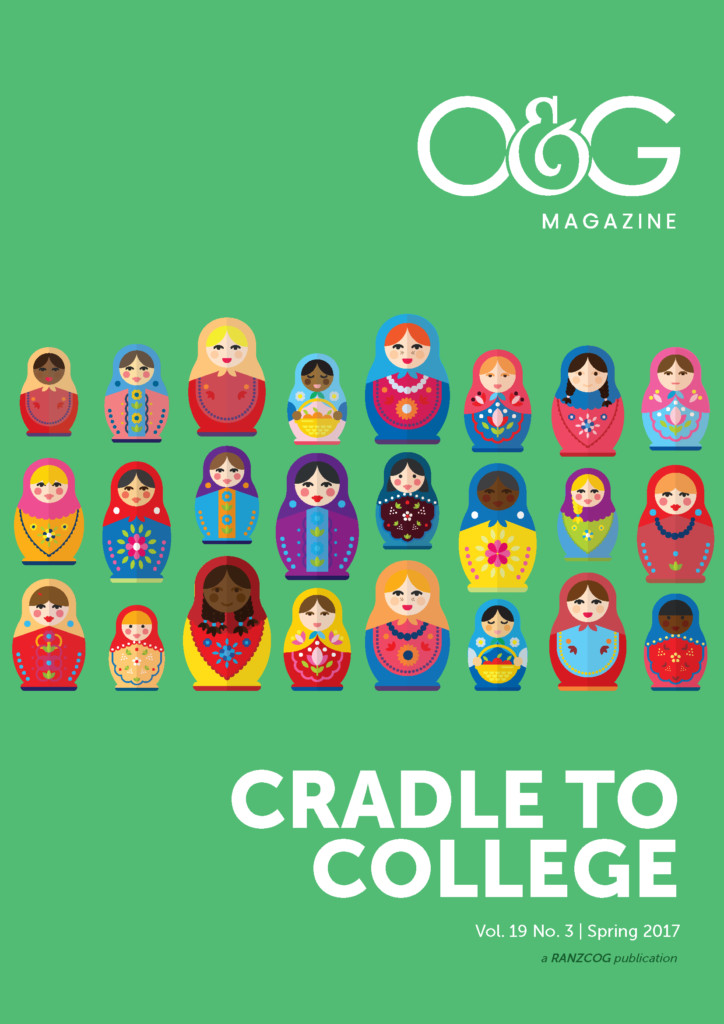Transgender issues have come to the fore of the public consciousness in the last few years – from the cover of Vanity Fair magazine to the desk of ABC TV’s ‘Q&A’ current affairs program. As doctors, especially as those with knowledge and skills for taking care of reproductive organs and fertility, it is important to have at least a basic understanding of what being transgender actually means, how it can affect our patients and how to best care for transgender people. Being transgender means having a gender identity that is not concordant with the gender identity assigned based on genital appearance at birth.
What are sex and gender and how do they interact?
Sex is the sum of our biological traits that produces either a male or female phenotype. It is essentially constant and made up from our karyotype, gonads, hormones and anatomy. Typically, we think of sex as either male or female, but there are some individuals who have a mix of different sex-producing aspects. For example, a woman with complete androgen insensitivity syndrome has testes and male levels of testosterone, but female external genitalia. Some people with a mix of sex-determining features will prefer to be referred to as intersex; however, the majority prefer female or male. Intersex and transgender are two distinct entities. Most transgender people are not intersex and vice versa, but the two concepts are often confused.
Gender is considered to be the social construct of what is considered maleness and femaleness. It is shaped by societal norms, peers and family. Gender may be fluid and is changeable over time and circumstance. Gender is often discussed in terms of the inner, more personal aspect of gender identity and the public, more visible gender role.
Gender identity is a person’s own sense of how female, male or in-between they feel. It is deeply personal and, for the majority of people, unquestioned. This can make it hard for non-transgender people (cis-gendered) to understand how someone could feel female if they have typically male biological traits and vice versa. Young children may believe that gender identity is transient and changing, but older children, teens and adults generally feel it is more permanent. Most transgender adults describe knowing they were transgender from a young age, but may not have shared this with others because of societal pressures. Gender identity is independent from sexual preference.
Gender role is the outward manifestation of maleness, femaleness or androgyny. It is expressed through behaviours, speech, clothing, toy and game preferences, fantasies, role playing, peer selection and interests. Gender role is a more adaptable and controllable characteristic. Gender role often changes depending on the circumstances – for example, some transgender people feel comfortable using a gender-appropriate name with friends, but may not use it with older relatives. Cis-gendered people will often vary their gender role – for example, a young woman may wear a dress when going to dinner at her grandmother’s house, but cargo pants and a hoody the rest of the time.
Some people will identify as transgender and some will identify as being both male and female or neither male nor female. This is often termed as being bigender for identifying as both genders, or agender if a person identifies as neither. An umbrella term for these identities is gender diverse. Often the term trans* is used as an inclusive term for all people on the transgender and gender-diverse spectrum.
What is gender dysphoria?
Being transgender is not a mental illness. In the DSM-III in 1980, ‘gender identity disorder’ was listed under psychosexual disorders. This remained through the DSM-IV and ICD-10 until it was renamed ‘gender dysphoria’ in the DSM-V. Gender dysphoria refers to the distress that may accompany discordance between one’s gender identity and assigned gender. Gender dysphoria can be very intense and may be associated with depression, anxiety and suicidality. Not all people who identify as transgender will have gender dysphoria. Gender dysphoria can often be alleviated or lessened through gender-affirming healthcare.
How many people are transgender?
There is no clear answer to this question. A UK Equal Opportunity Commission survey from 1981 reported that 1.4 per cent of the population identified as transgender or gender diverse. A New Zealand survey of 8500 teens in 2012 reported that 1.2 per cent identified as trans* and a further 2.5 per cent were unsure of their gender, while 1.7 per cent didn’t understand that question. Data from the US are mostly relating to who has sought gender affirmation surgery, which is likely an underestimate. There is no Australian adult data on this question and the Royal Children’s Hospital, Melbourne, estimates around 1 per cent of children and adolescents will experience gender-identity issues, but not all of these will continue to adulthood.
Transgender people’s health and wellbeing
While being transgender is not a mental illness, transgender people have worse levels of physical and mental health and general wellbeing. These problems are not inherently associated with being transgender, but stem from discrimination, stigma, social exclusion, bullying, rejection by family and friends, and experiencing barriers to timely, personalised transition (if desired). Suicide attempts are reported in about one third of transgender young Australians. This makes caring appropriately for transgender people a potential lifesaving measure. There is consistent evidence across many cultures of improved markers of physical and mental health and wellbeing for transgender people when appropriate social and healthcare support is provided.
Language use
Being misgendered or referred to by the wrong pronouns and/or name is offensive and unfortunately happens often, even by well-meaning care providers. I initially found it difficult to get my head around using a masculine pronoun when I had been using she/her for all of my patients for years, but after a few consultations it became second nature. Ask your patient what pronoun they would prefer – she/her, he/him or they/them – and use it. If you make a mistake, apologise and correct yourself. Some transgender people will use the title Mx and/or may have changed their name from the one given at birth. Try to avoid phrases like, ‘most women notice…’ or ‘often women find…’ and instead say, ‘most people find this… or ‘often people feel cramping after the procedure’.
Gender-affirming healthcare and transitioning
Gender-affirming healthcare is the provision of healthcare to allow a person to express their gender. It can vary from person to person and over someone’s life course. Gender-affirming healthcare can include hormonal therapies, surgery, psychological support and speech therapy. The aim of gender-affirming healthcare is to treat or reduce the dysphoria through provision of personalised care.
Transitioning is the act of changing from one’s assigned gender at birth to one’s affirmed gender. Again, transitioning is personal and not all people will transition in the same way or to the same extent. Some people will choose to socially transition, but not use hormonal medication or surgery. Social transitioning often includes changing one’s name and/or pronouns and physical changes such as wearing clothes, choosing a haircut or makeup use consistent with their affirmed gender.
Hormonal therapy used for transgender people includes GnRH agonists used to block puberty or suppress the hypothalamic-pituitary-ovarian axis, oestrogen, anti-androgens such as cyproterone acetate or spironolactone, and testosterone. Most patients have their hormone therapy commenced and monitored by an experienced GP. Thrombosis and metabolic changes increasing the risk of ischemic heart disease (such as hypercholesterolaemia) are the main concerning potential complications of this therapy.
Surgery is often referred to as ‘top’ or ‘bottom’. ‘Top’ surgery refers to mastectomy or breast augmentation and is a more common procedure. ‘Bottom’ surgery involves a much wider range of procedures, such as hysterectomy, oopherectomy, orchidectomy, feminising genitoplasty, metoidoplasty or phalloplasty. Most of these procedures are not readily available in Australia or are only available through the private system. For this reason, many people will travel overseas for surgery and, as such, may have limited or no follow-up care if there are complications. Australian gynaecologists are often involved with care for neo-vaginal stenosis, granulation tissue and revision introitoplasties. This can get quite complicated if the patient is on warfarin after a DVT from the plane trip home from Thailand!
The World Professional Association for Transgender Health (WPATH) publishes ‘Standards of Care for Gender Identity Disorders’, which is a document summarising professional consensus around gender-affirming heathcare and providing a guide for clinicians. It provides direction for how to safely provide cross-hormone treatment and advice on what information should be sought prior to irreversible surgical procedures. In general, it is recommended that someone have psychologist or psychiatrist review to confirm their affirmed gender, socially transition and use hormone therapy prior to any irreversible surgical procedure.
Further reading
Working group of the Gay, Lesbian, Bisexual, Transgender and Intersex Health and Wellbeing Ministerial Advisory Committee. Transgender and gender diverse health and wellbeing: Background paper. 2014. Department of Health, State of Victoria.
The World Professional Association for Transgender Health. Standards of Care for the Health of Transsexual, Transgender, and Gender Nonconforming People: Version 7, 2012. The World Professional Association for Transgender Health.
Hyde Z, Doherty M, Tilley PJM, et al. The First Australian National Trans Mental Health Study: Summary of Results. 2014. School of Public Health, Curtin University, Perth, Australia.
Smith E, Jones T, Ward R, et al. From Blues to Rainbows: Mental health and wellbeing of gender diverse and transgender young people in Australia. 2014. Melbourne: The Australian Research Centre in Sex, Health, and Society.
Robinson KH, Bansel, P, Denson N, et al. Growing Up Queer: Issues Facing Young Australians Who Are Gender Variant and Sexuality Diverse, Young and Well. 2014. Cooperative Research Centre, Melbourne.
Hillier L, Jones T, Monocle M, et al. Writing themselves in 3: The third national study on the sexual health and wellbeing of same sex attracted and gender questioning young people. 2010. Australian Research Centre in Sex, Health and Society, La Trobe University, Melbourne.






Leave a Reply